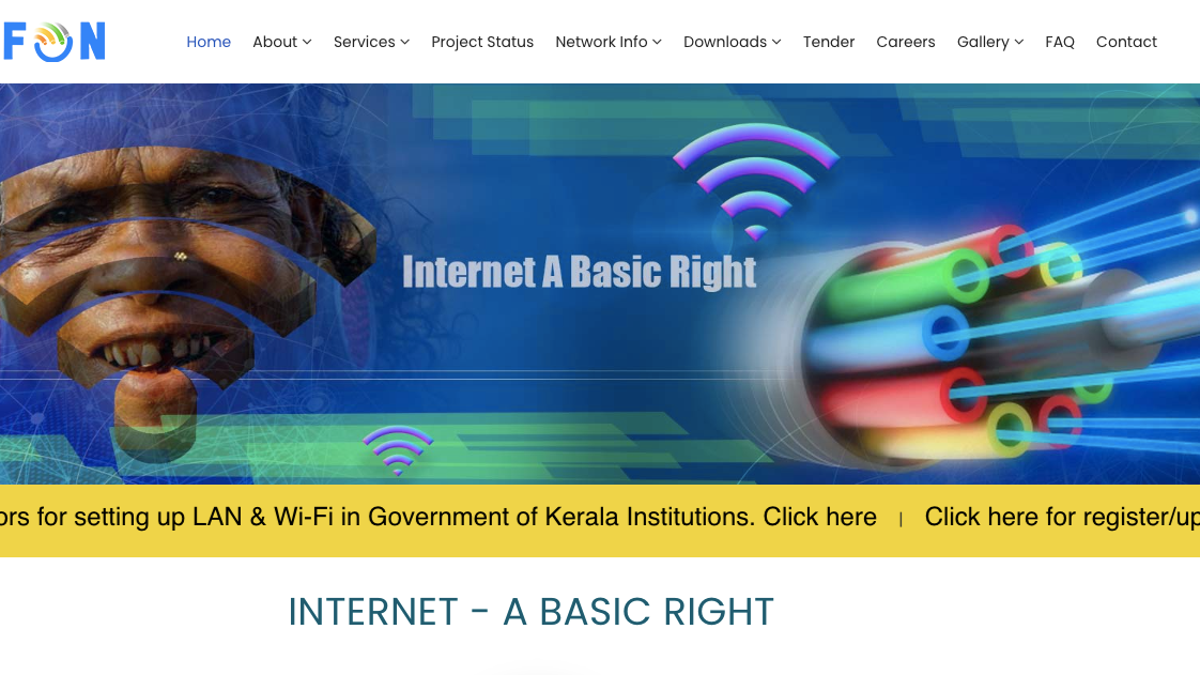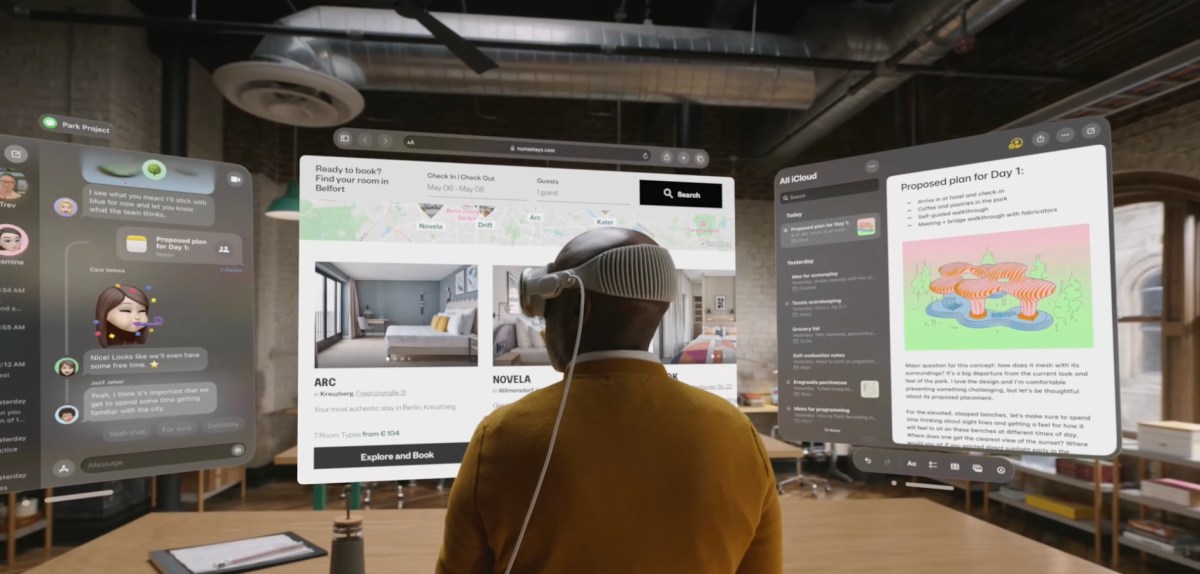- Arvind's Newsletter
- Posts
- Arvind's Newsletter
Arvind's Newsletter
Issue No #761
1.Kerala is offering free hi-speed internet to 2 million of its poor
Fourteen thousand poor households and 30,000 government offices of the southern Indian state of Kerala today were provided with high-speed internet. But the aim is higher.
The state’s new service, called Kerala Fibre Optic Network (KFON), is the first such in India and aims to uplink its 35 million citizens, especially 2 million of those considered poor. Launching the project in 2019, chief minister Pinarayi Vijayan’s government declared access to the internet a basic right. Lets hope other state governments compete on this service.
The Mint newspaper interviews Sanjiv Bajaj, on Bajaj’s new mutual fund foray. The Financial services part of the Bajaj group has been a shining star in the stock market over last 6-7 years and has created huge value for its shareholders.
Why are you launching Bajaj AMC?Sanjiv Bajaj: Our journey began in 2007. We decided to focus on the Indian middle class because they knew us. They had already bought our scooters, motorcycles and electrical appliances. We started with the early part of a person's lifecycle - getting a loan. So we started expanding Bajaj Finance. We then said that, okay, as a person makes a lot of money, they will buy a house, they will buy a two wheeler or a four wheeler. So asset protection and life protection comes in - general and life insurance. And accordingly, we started setting up each of the businesses. We first applied for the mutual fund licence in 2011. But that was around the time when Securities and Exchange Board of India (Sebi) dramatically changed its first set of regulations for mutual funds and cut its commissions. And we decided we would wait for those things to settle down.
We built our digital distribution. We let the customer start experiencing our products. The biggest challenge for any new fintech or insurtech is the acquisition cost of customer. We pay to get the customer on board one time. After that we never pay. And first time also, acquisition cost is not direct the way the startups are paying. For us it is our investment in digital, in 150,000 stores, in creating a strong sales team.
Second, we realised that a large number of distributors are common across different products and services. So, we now have a large number of distributors who already know what is different and unique about us. And our focus has always been the right product, with transparency. For example even in 0% financing our documentation says what our IRR, is because the manufacturer is paying us.
And third is the entire culture we have built on empowerment, innovation, reward with our teams, for them to feel like owners in building their businesses up rather than top down. Simple thing like being in Pune and not being in Mumbai was a very conscious call from 10 years ago to say that we don’t want to be in the noise of Mumbai.
Read on.
Apple’s launched it much awaited mixed reality headset- Vision Pro and it is receiving strong reviews.
This has been Apple’s most anticipated hardware product launch since Steve Jobs revealed the iPad in 2010. The gadget, called Vision Pro, will be available “early next year”. It combines virtual reality with augmented reality, which overlays digital images on top of the real world. Apple said it would sell for $3,499, even more than most analysts had expected and nearly 12 times the price of Meta’s Quest 2, the biggest-selling VR headset. This what TechCrunch has to say:
“I’ve used essentially every major VR headset and AR device since 2013’s Oculus DK1 right up through the latest generations of Quest and Vive headsets.
But none of them had the advantages that Apple brings to the table with Apple Vision Pro. Namely, 5,000 patents filed over the past few years and an enormous base of talent and capital to work with. Every bit of this thing shows Apple-level ambition. I don’t know whether it will be the “next computing mode,” but you can see the conviction behind each of the choices made here. No corners cut. Full-tilt engineering on display.The hardware is good — very good — with 24 million pixels across the two panels, orders of magnitude more than any headsets most consumers have come into contact with. The optics are better, the headband is comfortable and quickly adjustable and there is a top strap for weight relief. Apple says it is still working on which light seal (the cloth shroud) options to ship with it when it releases officially but the default one was comfortable for me. They aim to ship them with varying sizes and shapes to fit different faces. The power connector has a great little design, as well, that interconnects using internal pin-type power linkages with an external twist lock.
If you have experience with VR at all then you know that the two big barriers most people hit are either latency-driven nausea or the isolation that long sessions wearing something over your eyes can deliver.Apple has mitigated both of those head on. The R1 chip that sits alongside the M2 chip has a system-wide polling rate of 12ms, and I noticed no judder or framedrops. There was a slight motion blur effect used in the passthrough mode but it wasn’t distracting. The windows themselves rendered crisply and moved around snappily. Read on.
4.Chipmaker TSMC defends overseas expansion plans
TSMC has defended its push to diversify manufacturing beyond the company’s native Taiwan as a vital step to secure the future of the world’s largest contract chipmaker, amid increasing geopolitical tensions reports the Financial Times.
Taiwan Semiconductor Manufacturing Company’s overseas expansion plans have triggered concerns at home, with shareholders challenging management at its annual meeting on Tuesday.
They asked chair Mark Liu to explain the rationale behind his decision to invest $40bn in two fabrication plants in the US, build another one in Japan and consider one in Germany.
Liu said the company needed to globalise to retain and expand its technology and manufacturing leadership.The initial decision to invest in a fabrication plant in Arizona had been triggered by demands from customers in 2018 that the company made available capacity in the US for defence and sensitive infrastructure-related products.
“Going to the US is not all downside, it is not just about additional cost, but it is a long-term development direction for TSMC,” he added. “How can we keep our position as global technology leader in the coming 10 to 20 years? That has to do with the question whether Taiwan has enough talent, whether Taiwan has enough research and development. We must not assume that our current success will continue in the future.”
Liu’s comments marked the first time geopolitics has taken centre stage at a TSMC annual meeting — a change sparked by the mounting competition between the US and China. Their battle for tech supremacy is piling pressure on the Taiwan-dominated global tech supply chain to take sides, while China is responsible for a growing military intimidation campaign against Taiwan.
5.The Most Common Graduation Advice Tends to Backfire, opine Dr. Sapna Cheryan and Therese Anne Mortejo in their article in New York Times.
As college students graduate and embark on the next phases of their lives, one piece of advice they will undoubtedly receive is to follow their passions or some equivalent sentiment. It seems like fine guidance, however clichéd: Do something that feels true to yourself rather than conform to expectations.
But following your passions often turns out to be a bad idea. New research that we and our colleagues conducted found that when asked to identify their passions, women and men tend to cite stereotypically feminine and masculine interests and behaviour. Women are more likely to say they want to make art or help people, for instance, while men are more likely to say they want to do science or play sports.
In other words, when asked to identify their passions, people seem to do precisely what following their passions is supposed to discourage: They conform to societal expectations. This finding is especially troubling for anyone concerned about gender disparities in fields like computer science and engineering, in which women are significantly underrepresented.
That is, if you encourage women and men to follow their passions in selecting a major or career, there is a big gender gap. If you encourage them to make money, there is less of a gender gap, with more women skewing toward traditionally masculine fields. And if you encourage them to nurture and support other people, there is also less of a gender gap, with more men skewing toward traditionally feminine field.



